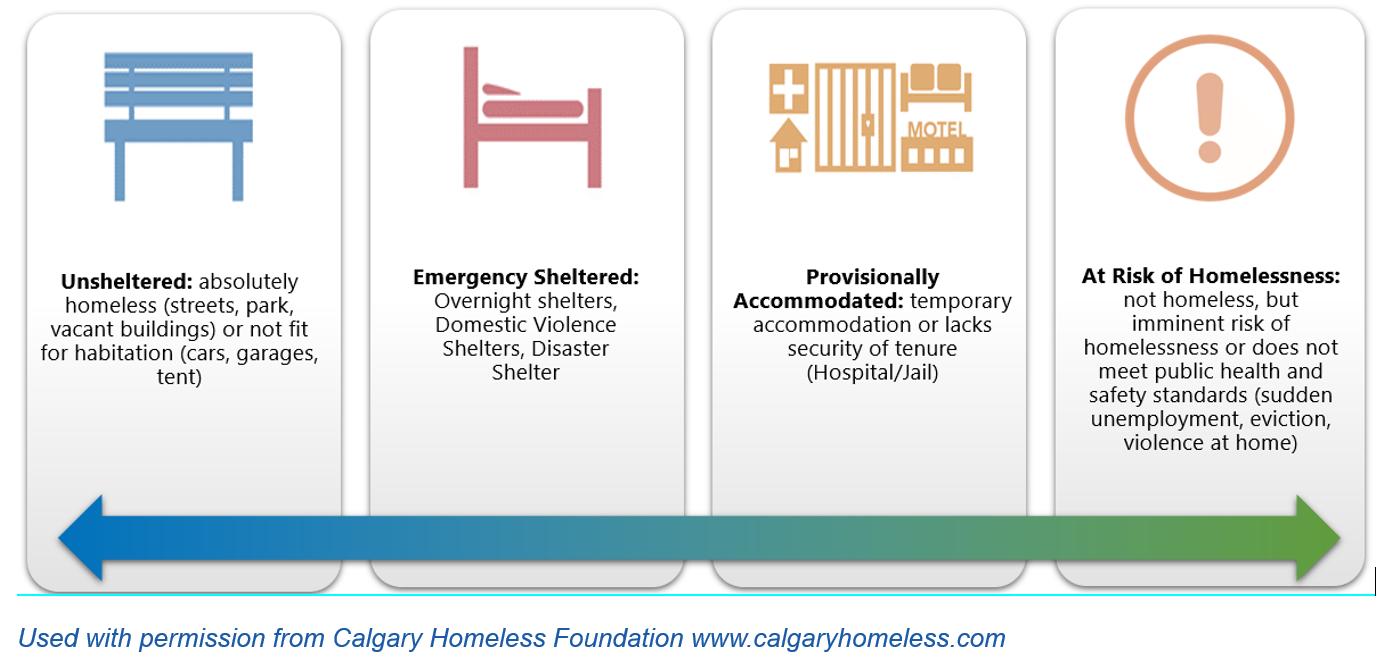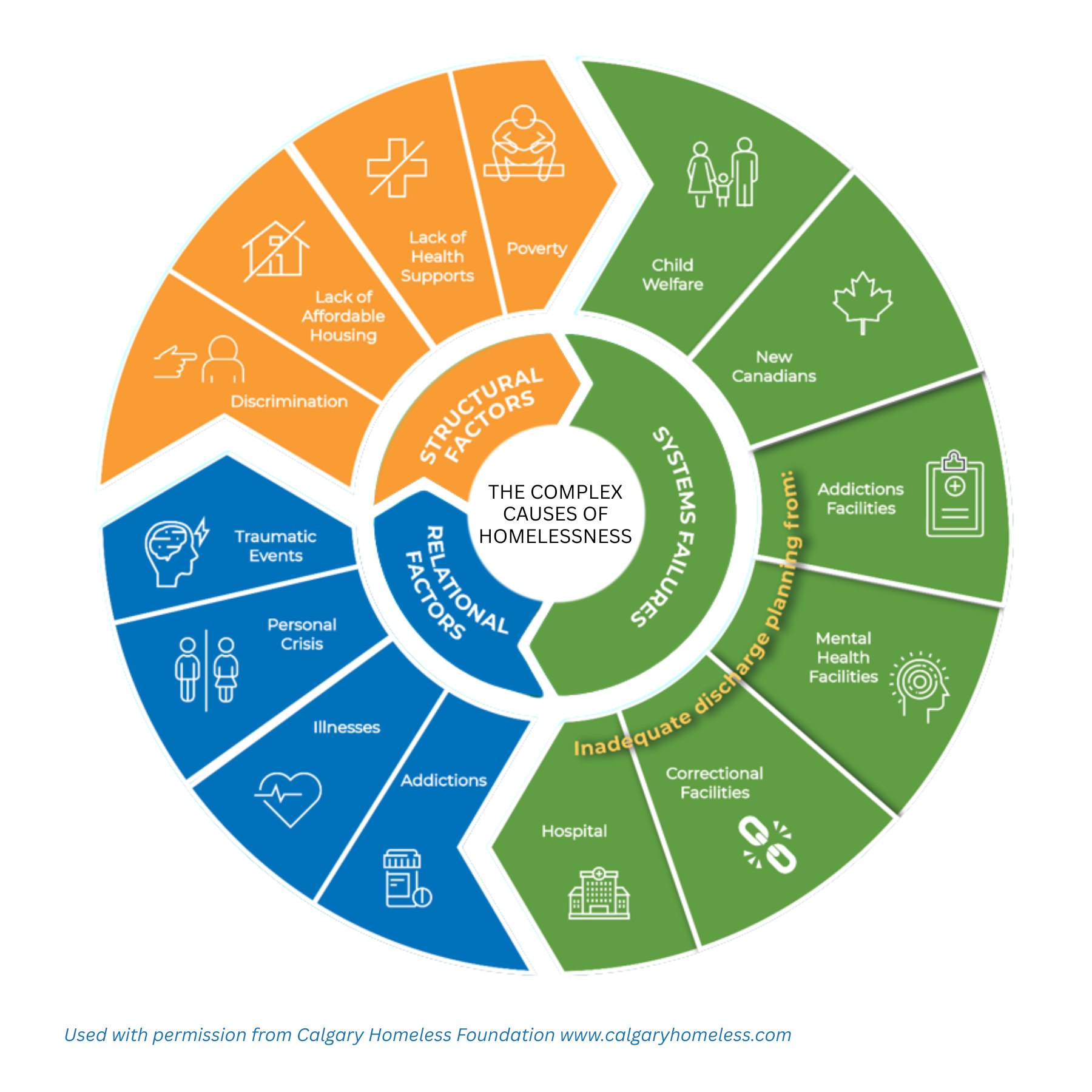There’s more to being homeless than living without a home.
Homelessness is not a choice and it is not the result of personal failure.
There is no single cause for homelessness, and the experience arises from systemic issues like poverty and economic changes, combined with personal circumstances.
It’s an experience that can happen to anyone, and it can mean “sleeping rough,” couch-surfing, and living in shelters to having a home but being at risk of losing it.
Discover the causes of homelessness, common myths about it, and where help is available.
Did you know at least 30 people experience homelessness in Timiskaming on any given night?
For these adults, youth and families, homelessness is not a choice, and each person experiences it differently. But every person who is experiencing homelessness is vulnerable and lacks the income and supports to stay housed.
Stop the stigma. Learn the facts.
When people think of homelessness, they often think of those living on the street. But did you know they only make up a small proportion of people who don’t have a home?
“Homelessness” refers to four types of living situations:

What causes a person to experience homelessness?

There is no single factor that causes homelessness.
Homelessness is an experience that arises from a combination of issues.
Myths
Myth 1: Only people who sleep in the streets are experiencing homelessness.
Homelessness is not limited to living and sleeping on the streets. In reality, you can have a roof over your head and still be experiencing homelessness.
Many women and youth tend to avoid sleeping in the streets and shelters out of fear of violence. They are more likely to couch surf or live with others.
Myth 2: People become homeless because of poor choices and just need to budget better.
Everyone is vulnerable to losing their home. Almost half of Canadians live paycheck to paycheck.
Homelessness has many causes. Some are outside of a person’s control, like the state of the economy or a lack of affordable housing.
A person’s personal circumstances like a chronic health condition, may also contribute to them being without a home.
Many youth who are homeless cannot return home when their family breaks down, or they have aged out of foster care. 2SLGBTQ+ youth experience homelessness more often than their non-2SLGBTQ+ peers due to family rejection, discrimination and violence.
Individuals experiencing homelessness may also have a history of adverse childhood experiences, or traumatizing events occurring before the age of 18 that lead to toxic stress. This can have a profound effect on brain development, which can create challenges in finding employment later on in life. It is estimated that 80% of the Timiskaming population has experiencesd ACEs in their lifetime.
Myth 3: All people who are experiencing homelessness are criminals and dangerous.
People without permanent homes are more likely to experience physical violence and sexual assault than to be the ones committing a crime.
While people experiencing homelessness may have more frequent interactions with police, it is usually because the activities related to their daily survival have been criminalized – such as loitering, trespassing or shoplifting for food.
Myth 4: All people who are experiencing homelessness are dealing with substance use issues.
Only about 25% of homeless people in Ontario report substance use.
Substance use is only one of many factors that can put a person at risk of losing their housing. Drugs and alcohol are never the sole cause of homelessness.
Not having a home may contribute to someone’s use of substances to help cope with the stress of living without a permanent shelter, loss of income, isolation, discrimination and loss of self-worth.
Recovering from addiction is difficult for housed people; it is even more difficult for people experiencing the additional trauma of homelessness.
Myth 5: Providing shelters and transitional housing make people dependent on the system.
Supporting people experiencing homelessness gives them a hand up, not a handout.
Generally, people who access shelters and transitional housing can access other resources, regain a sense of safety and become more self-sufficient. Many who use these services are able to gain employment and go on to live independently afterwards.
Myth 6: There is nothing being done to help the homelessness crisis.
There are many programs available locally to help prevent homelessness.
If you are in a difficult situation, ask for help.
Locally, there are options available if you are experiencing homelessness.
| Pavilion's Women Centre |
| 705-672-2128 |
| Transitional housing | cmhatim@cmhact.ca | 705-267-8100 |
| Hope Haven Men’s Transitional Housing | Temiskaming@salvationarmy.ca | 705-567-5877 |
| Homelessness Prevention — DTSSAB | New Liskeard 705-647-7447 | Kirkland Lake 705-563-9366 |
Myth 7: Opening a shelter only attracts more homeless people to the area.
A majority of homeless people remain in the community that they became homeless in. Some people choose to move to look for work, be closer to family or other reasons, not always because there are more services somewhere else.
Myth 8: There’s lots of housing available if they would just look for it.
There are local and provincial affordable housing shortages. While housing may be available, it does not suit the needs of low and moderate-income households.
Rental vacancies are hard to find, and subsidized housing has a wait list of 5-8years.
This campaign is coordinated by the Timiskaming Community Safety and Well-being Plan (CSWB), funded by the District of Timiskaming Social Services Administration Board (DTSSAB) and supported by Northeastern Public Health (NEPH).
20250714 ko:tr